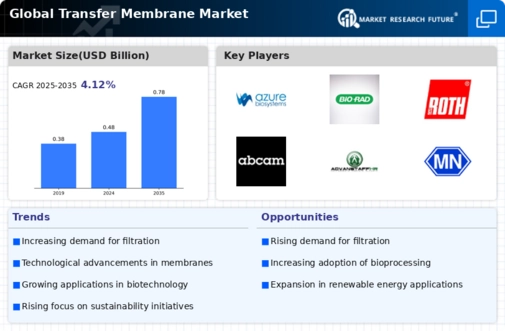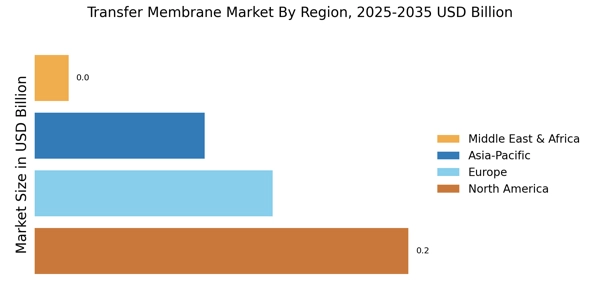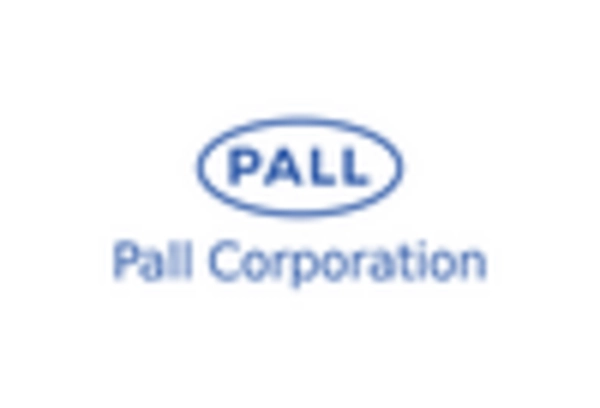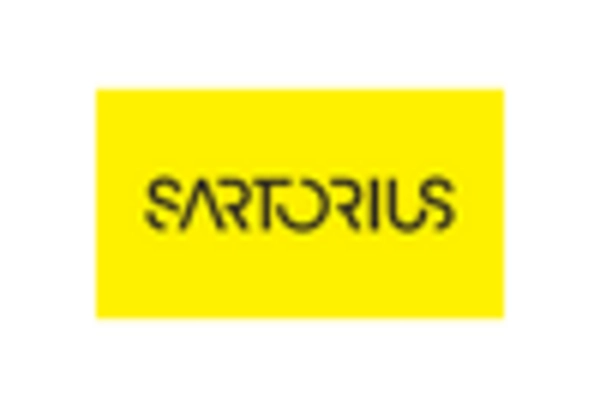Increased Demand in Healthcare Applications
The Transfer Membrane Market is witnessing heightened demand in healthcare applications, particularly in biopharmaceutical manufacturing and diagnostics. Membranes are essential for processes such as protein purification and cell culture, which are critical in the development of vaccines and therapeutics. The biopharmaceutical sector is projected to grow significantly, with an estimated market value reaching over 500 billion dollars by 2026, thereby driving the demand for advanced membrane technologies. Moreover, the ongoing need for efficient filtration systems in laboratories and hospitals underscores the importance of membranes in ensuring safety and efficacy in medical applications. This trend is likely to propel the market forward, as healthcare providers seek reliable solutions.
Rising Industrial Applications of Membranes
The Transfer Membrane Market is expanding due to the rising industrial applications of membranes across various sectors, including food and beverage, chemical processing, and energy. Membranes are increasingly utilized for processes such as separation, concentration, and purification, which are essential in enhancing product quality and operational efficiency. For instance, in the food industry, membranes are employed for the concentration of fruit juices and dairy products, leading to reduced energy costs and improved product shelf life. The industrial membrane market is expected to grow at a rate of approximately 5% annually, driven by these diverse applications. As industries continue to seek innovative solutions for process optimization, the demand for specialized membranes is likely to increase.
Growing Investment in Research and Development
Investment in research and development is a crucial driver for the Transfer Membrane Market, as companies strive to innovate and improve membrane technologies. Increased funding from both private and public sectors is facilitating the exploration of new materials and processes that enhance membrane performance. This trend is particularly evident in the development of membranes with enhanced selectivity and permeability, which are essential for applications in water treatment and gas separation. The market is expected to benefit from a projected increase in R&D spending, which could reach billions of dollars in the coming years. As a result, advancements in membrane technology are likely to lead to new applications and market opportunities, further propelling industry growth.
Sustainability Initiatives Driving Market Growth
Sustainability initiatives are becoming increasingly pivotal in the Transfer Membrane Market, as companies and governments alike prioritize eco-friendly solutions. The demand for membranes that facilitate water reuse and energy recovery is on the rise, reflecting a broader commitment to environmental stewardship. For example, membranes that enable the treatment of wastewater for reuse in industrial processes are gaining traction, contributing to a more circular economy. This shift is supported by regulatory frameworks that encourage sustainable practices, potentially leading to a market expansion of around 6% annually. Additionally, the focus on reducing plastic waste is prompting innovations in biodegradable membranes, further aligning the industry with sustainability goals.
Technological Advancements in Membrane Technology
The Transfer Membrane Market is experiencing a surge in technological advancements that enhance membrane performance and efficiency. Innovations such as nanotechnology and advanced polymer materials are being integrated into membrane design, leading to improved filtration capabilities and reduced energy consumption. For instance, the introduction of high-flux membranes has been shown to increase productivity in various applications, including water treatment and pharmaceuticals. As a result, the market is projected to grow at a compound annual growth rate of approximately 7% over the next five years, driven by these technological improvements. Furthermore, the development of smart membranes that can adapt to varying conditions is likely to revolutionize the industry, making it more versatile and efficient.


















Leave a Comment